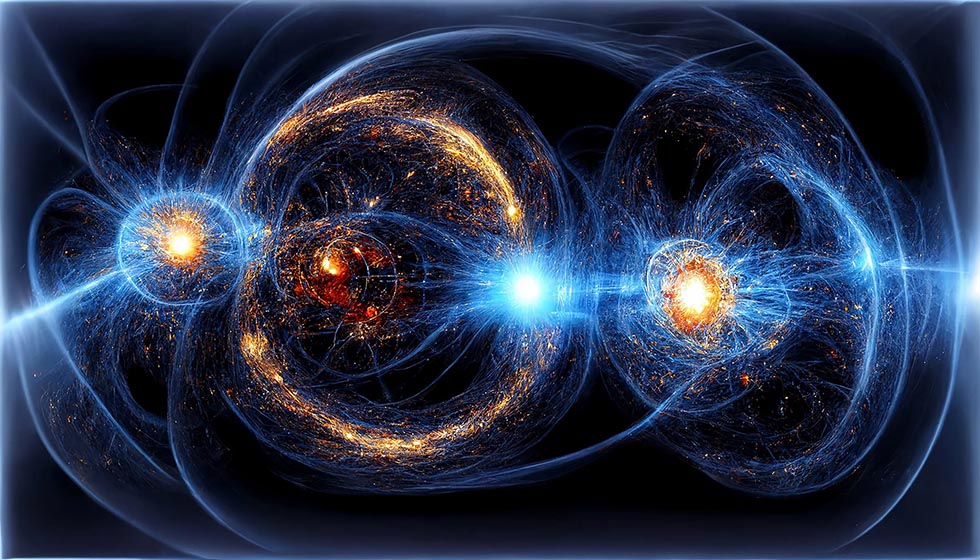One of the greatest challenges in physics is to find a theory that can reconcile the seemingly incompatible descriptions of gravity and quantum mechanics. Gravity is the force that governs the large-scale structure of the universe, while quantum mechanics is the theory that describes the behavior of subatomic particles. Einstein’s general theory of relativity, which explains gravity as the curvature of spacetime, works well for describing phenomena such as black holes and the expansion of the universe. However, it breaks down at the Planck scale, where quantum effects become significant and spacetime becomes fuzzy.
Quantum mechanics, on the other hand, is a very successful theory that can account for the interactions of matter and energy at the smallest scales. However, it does not incorporate gravity, and it is unclear how to extend it to include the effects of spacetime curvature. Many physicists have tried to develop a theory of quantum gravity, which would unify the two frameworks and provide a complete picture of nature. Some of the most popular candidates are string theory, loop quantum gravity, and causal dynamical triangulation. However, none of these theories have been experimentally verified, and they face many conceptual and technical difficulties.
A new theory, proposed by Professor Jonathan Oppenheim from UCL Physics and Astronomy and his collaborators, claims to offer a novel way of unifying gravity and quantum mechanics, while preserving Einstein’s classical concept of spacetime. The theory is based on the holographic principle, which states that the information content of a region of space can be encoded on a lower-dimensional boundary, such as a surface. This idea was originally inspired by the observation that the entropy of a black hole, which measures the amount of information it can store, is proportional to its surface area, rather than its volume. The holographic principle suggests that the entire universe can be viewed as a hologram, where the three-dimensional reality we perceive is actually projected from a two-dimensional surface at the edge of the cosmos.
The new theory applies the holographic principle to a special quantum mechanical system, called a quantum error-correcting code, which can protect information from being corrupted by noise. The researchers show that this system can be interpreted as a holographic spacetime, where gravity emerges from the quantum entanglement of the encoded information. Quantum entanglement is a phenomenon where two or more particles share a quantum state, such that their properties are correlated even when they are separated by large distances. The researchers argue that quantum entanglement is the fundamental ingredient that gives rise to gravity, and that the geometry of spacetime is determined by the pattern of entanglement in the quantum code.
The new theory has several advantages over existing approaches to quantum gravity. First, it does not require any extra dimensions or exotic objects, such as strings or loops, to explain gravity. Second, it does not modify Einstein’s equations of general relativity, but rather derives them from the quantum code. Third, it does not suffer from the problem of non-locality, which plagues some quantum theories of gravity, where physical effects can propagate faster than light. Fourth, it does not introduce any singularities or infinities, which are often encountered in classical theories of gravity, such as the Big Bang or the center of a black hole. Fifth, it is compatible with the cosmological constant, which is the observed value of the energy density of the vacuum, and which drives the accelerated expansion of the universe.
The new theory is still in its early stages, and it faces many open questions and challenges. For example, it is not clear how to extend the theory to include matter and radiation, which are essential components of the physical world. It is also not clear how to test the theory experimentally, and whether it can make any novel predictions that can be verified by observations. Moreover, the theory is not unique, and there may be other quantum codes that can produce different kinds of gravity or spacetime. The researchers hope that their work will inspire further investigations and developments in the field of quantum gravity, and that it will shed new light on the fundamental nature of reality.






